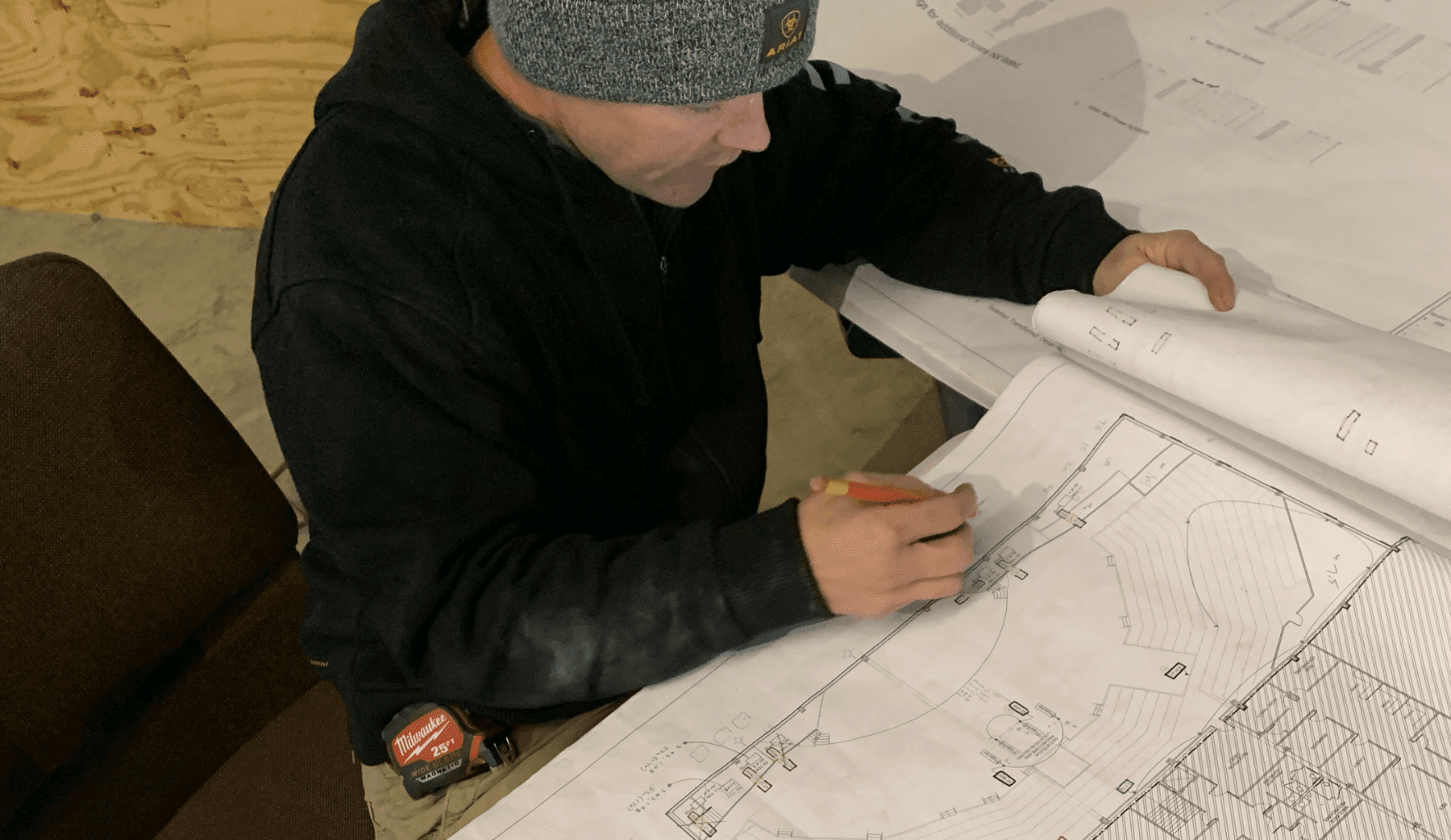Introduction
Lets jump into the methodology of determining the dwelling unit service load. We will be doing this through the Part III Standard Method as outlined in the 2023 NFPA 70. We will also go over how to size the service and service conductors. Undeniably recognized as a sophisticated approach, the Standard Method considers individual demand factors for each appliance and type of circuit installed in a dwelling unit. Whereas the Part IV Optional Method uses a more generalized approach.

Methodology of the Part III Standard Method
- The first step in employing the Standard Method involves estimating the general lighting and general-use receptacle load. You achieve this by multiplying the unit’s total square footage by a standard rate of 3 VA per square foot. (See 220.41 and Table 220.42(A) above)
- After the lighting and general-use receptacles, we calculate more specific receptacle loads:
Individual loads for the two required small appliance branch circuits (See 220.52(A))
Load for the one required laundry circuit (220.52(B))

- After gathering the lighting and receptacle loads we add them together and apply our first demand factor from Table 220.45
- Next, we determine the appliances and equipment based on their nameplate ratings and employ specific demand factors for each. This includes dryers (220.54), electric cooking equipment (220.55), electric space-heating equipment (220.51), electric vehicle charging (220.57), and any noncoincident loads (220.60) that cancel each other out. You can apply demand factors to many of these appliances depending on the number you install. To figure this out, we use that section’s table. (For example Article 220.54 gives the rules for dryers. Table 220.54 gives the actual values to use in the calculation, based on the number of dryers being installed.)
- We’re able to apply a 75% demand factor for any additional fastened-in-place appliances if there are 4 or more of these appliances on the same service or feeder. These must be 1/4HP or greater or 500W or greater to be considered in the demand factor. They can also not include any of the appliances from step 3. (See 220.53)
Moving on to the final stage!
- The final stage in this method entails aggregating the individually calculated loads to arrive at the cumulative service load. (What we call the “Total Demand Load” for the dwelling unit.)
- Once we get the total demand load we divide that number (in VA) by the voltage of the service. (Usually 240V for residential dwellings) Which yields the total Amperes for the service.
- Now that we have Amperes to work with, we can size our service conductors. We do this using either 310.12 or Table 310.16, and if desired, sizing a reduced neutral conductor per 220.61. Per 310.12, if a dwelling has a single-phase 100-400 service, the conductors feeding that service are allowed to be only 83% of the size of the service rating. (rating of the service equipment – not the calculated load of the service). If no adjustment or correction factors are required, Table 310.12(A) shall be permitted to be applied rather than using Table 310.16. However, for some, it is preferable to just use Table 310.16 to size these conductors manually. (Note that Table 310.12(A) and Table 310.16 may result in different conductor sizes as a result.)

Comparison between Table 310.12(A) and Table 310.16- Source: http://link.nfpa.org
A Practical Example
Furthermore, to better illustrate this method, let’s consider a dwelling unit encompassing 1,500 square feet with specified circuits and appliances.
- Using the Part III Standard Method, the initial general lighting and general-use receptacle load amounts to 4,500 VA, derived from the product of 1,500 square feet and 3 VA per square foot.
- Next we add the small appliance and laundry branch circuits:
- 2 Small appliance branch circuits at 1,500 VA each account for 3,000 VA
- Laundry circuit adds 1,500 VA
- Add the general lighting, small appliance, and laundry loads together to get the total lighting demand load:
- 4,500 VA + 3,000 VA + 1,500 VA = 9,000 VA
- Using Table 220.45 we apply the first 3,000 VA to our service calculation but the remaining 6,000 VA we only need to figure in 35% of.
- So 3,000 VA + (6,000 VA x 0.35) = 5,100 VA
- Our total lighting demand load we must use for calculating this service is 5,100 VA rather than 9,000 VA because most of the receptacles and lighting will not be on constantly. People may use some receptacles to vacuum the floor and then not use them again. So we use the demand factor to allow a reduction to more realistic values.
4. Next, we move into the appliances and applying the designated demand factors:
- Range: 12,000 VA (using column C from Table 220.55 we’re allowed to adjust this down to 8,000 VA for a single range not over 12,000 VA)
- Electric space heating: 6,000 VA (must use 100% of this value per 22.51)
- Air conditioner: 5,000 VA (can negate this entirely, as it is a non-coincident load with the electric heater above – per 220.60)
- Clothes dryer adds another 5,000 VA (must use 100% of this per 220.54)
- Adding these large appliances together we get a portion of our appliance load: 8,000 VA + 6,000 VA + 5,000 VA = 19,000 VA
5. Now, we have 5 additional fastened-in-place appliances. This means we can apply a demand factor of 75% to this from 220.53:
- Water heater: 4,000 VA
- Dishwasher: 1,200 VA
- Water softener: 750 VA
- Garbage disposal: 950 VA
- Warming Drawer: 1500 VA
- These 5 fastened-in-place appliances can have a 75% demand factor applied to them. First we need to add them all up, then apply the demand factor:
- 4,000 VA + 1,200 VA + 750 VA + 950 VA+ 1,500 VA = 8,400 VA
- Applying the demand factor we get: 8,400 VA x 0.75 = 6,300 VA
- Now we can add the large appliances above (19,000 VA) with these fastened-in-place appliances (6,300 VA) to get our total appliance demand load:
- 19,000 VA + 6,300 VA = 25,300 VA
6. Add together the total lighting demand load (5,100 VA), and the total appliance demand load (25,300 VA) to get our Total Calculated Load which we will use to size our service from.
- 5,100 VA + 25,300 VA = 30,400 VA
- Now take the Total Calculated Load and divide that by 240 V:
- 30,400 / 240 = 156.7 Amperes
- 230.42 A2 states that “The minimum service-entrance conductor size shall have an ampacity not less than the maximum load to be served after the application of any adjustment or correction factors.” So the service must be a minimum of 156.7 Amperes in size. We cannot round down to a 150 Amp service, we must go up to a 175 Amp service. This also shows that a 175 Ampere service can be fed with 1/0 Copper according to Table 310.12 because any dwelling service between 100 and 400 Amperes, single phase, is allowed to have conductors feeding it which are 83% the size of the load of the service rating.
- If we were to, instead of using Table 310.12, use Table 310.16 to size our conductors, we would see that a 75-degree conductor that can handle 175 Amperes of current would be 2/0 Copper (THHW, or THWN for example). But by applying the 83% rule to a service rating of 175 Amperes (175 A x 0.83 = 145.25) we realize we can get away with a 145 Ampere conductor to feed this service – regardless that the Total Calculated Load is 156.7 Amperes.
- So we use the Total Amps for the service to figure out the service rating (size panel we need), and then we figure out the smallest conductors we can get away with based on that service rating.
Conclusion
Engaging the Part III Standard Method for your dwelling unit service load calculations, as dictated in the 2023 National Electrical Code, ensures a precise and reliable result due to its intricate focus on individual demand factors for each appliance and equipment. Moreover, several jurisdictions mandate this method, highlighting its critical role in safe electrical installations. We cover sizing the service Neutral (grounded conductor) using 220.61 and Grounding Electrodes and Grounding Electrode Conductors in separate articles which are essential next steps in sizing a service. In our next article we’re going to compare this same service we just calculated, while instead using the Part IV Optional Method for calculating services in a quicker, though less precise way.





